摘要 在Prism中彈出一個對話框,預設是一個Windows預設樣式的視窗,會與自己所開發的項目完全不搭配,例如下麵這樣子 如果為了迎合軟體主體風格,可以做出類似這樣效果 其實原理也很簡單,Prism也考慮到了這一點,所以特意設計一個供用戶自定義的介面 編寫組件樣式 1、新建一個Window視圖 註 ...
摘要
在Prism中彈出一個對話框,預設是一個Windows預設樣式的視窗,會與自己所開發的項目完全不搭配,例如下麵這樣子
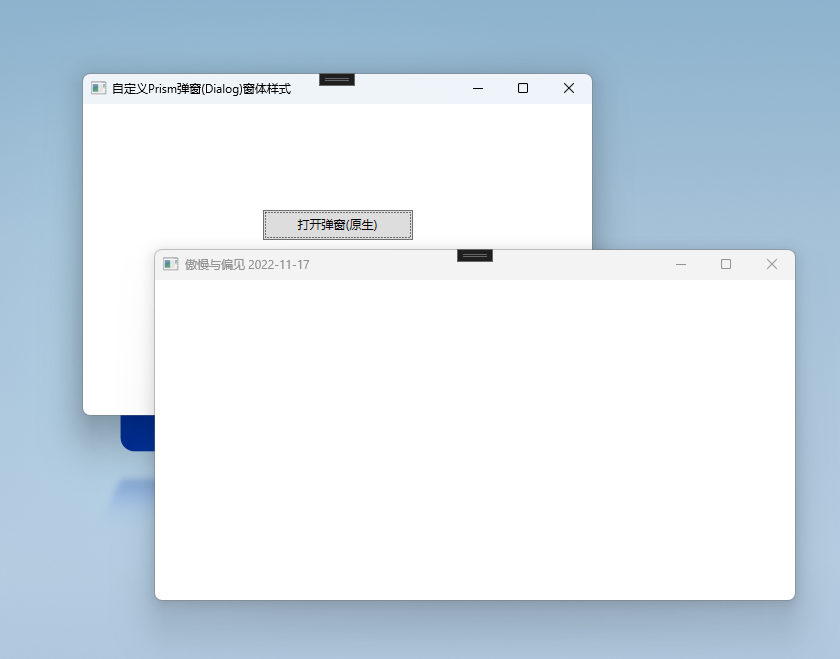
如果為了迎合軟體主體風格,可以做出類似這樣效果
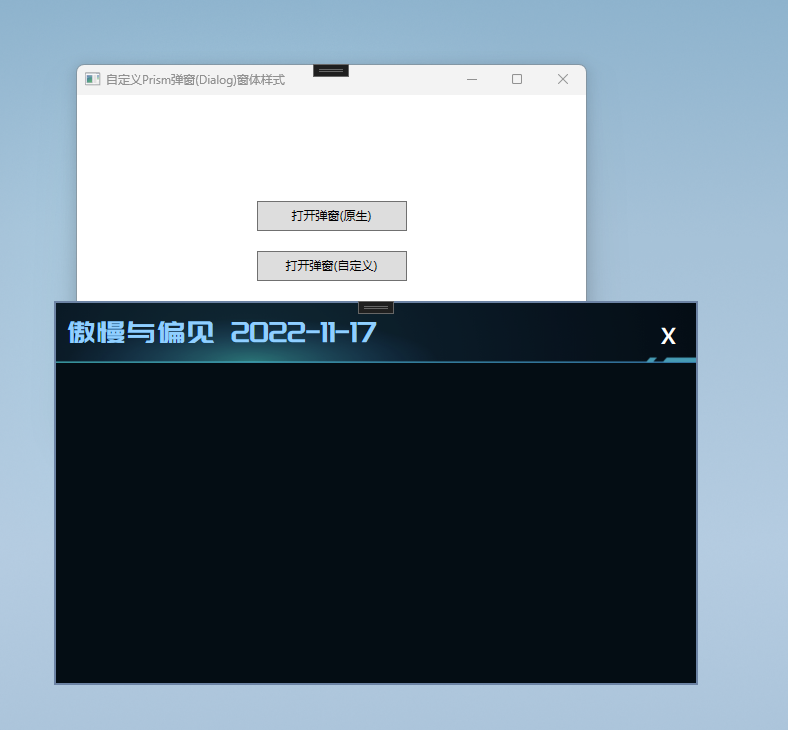
其實原理也很簡單,Prism也考慮到了這一點,所以特意設計一個供用戶自定義的介面

編寫組件樣式
1、新建一個Window視圖
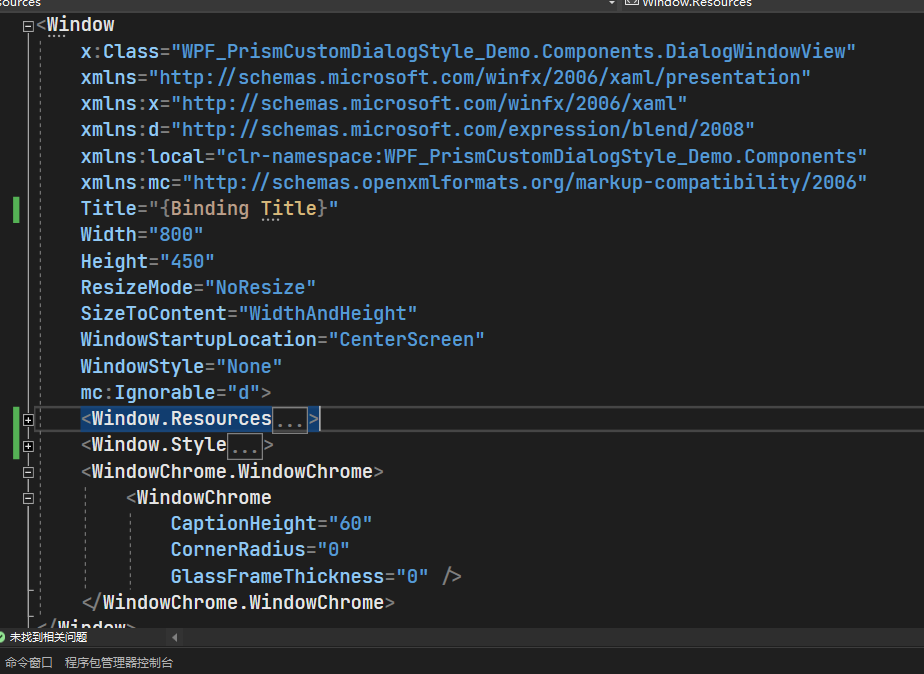
註意Window里的一些必要屬性記得設置一下,比如SizeToContent ShowInTaskbar等等實現無邊框還是使用常規WindowChrome做法
<WindowChrome.WindowChrome>
<WindowChrome
CaptionHeight="60"
CornerRadius="0"
GlassFrameThickness="0" />
</WindowChrome.WindowChrome>
其中CaptionHeight表示可以拖拽的高度,這裡一般建議與自己所設計的高度一致,關於WindowChrome相關用法和介紹就不過多贅述,具體可前往MSDN文檔:WindowChrome 類
2、根據自己需求或設計圖重寫該窗體樣式,XAML太多就不一一介紹了,直接上代碼
<Window
x:Class="WPF_PrismCustomDialogStyle_Demo.Components.DialogWindowView"
xmlns="http://schemas.microsoft.com/winfx/2006/xaml/presentation"
xmlns:x="http://schemas.microsoft.com/winfx/2006/xaml"
xmlns:d="http://schemas.microsoft.com/expression/blend/2008"
xmlns:local="clr-namespace:WPF_PrismCustomDialogStyle_Demo.Components"
xmlns:mc="http://schemas.openxmlformats.org/markup-compatibility/2006"
Title="{Binding Title}"
Width="800"
Height="450"
ResizeMode="NoResize"
SizeToContent="WidthAndHeight"
WindowStartupLocation="CenterScreen"
WindowStyle="None"
mc:Ignorable="d">
<Window.Resources>
<!-- 畫刷 -->
<SolidColorBrush x:Key="DialogBackgroundColor" Color="#040D14" />
<SolidColorBrush x:Key="DialogBorderBrushColor" Color="#6C83A4" />
<SolidColorBrush x:Key="DialogTitleColor" Color="#90CFFF" />
<ImageBrush x:Key="DialogTitleImageBrush" ImageSource="/WPF_PrismCustomDialogStyle_Demo;component/Assets/Images/dialog_heder_bg.png" />
<LinearGradientBrush x:Key="TitleTextGradientColor" StartPoint="0,0" EndPoint="0,1">
<GradientStop Offset="1" Color="#A5BCF3" />
<GradientStop Offset="0" Color="White" />
</LinearGradientBrush>
<!-- 字體 -->
<FontFamily x:Key="TitleFontFamily">/WPF_PrismCustomDialogStyle_Demo;component/Assets/Fonts/#龐門正道標題體3.0</FontFamily>
<!-- 對話框標題樣式 -->
<Style x:Key="SystemTitleStyle" TargetType="{x:Type TextBlock}">
<Setter Property="VerticalAlignment" Value="Center" />
<Setter Property="HorizontalAlignment" Value="Center" />
<Setter Property="TextAlignment" Value="Center" />
<Setter Property="FontSize" Value="15" />
<Setter Property="FontFamily" Value="{StaticResource TitleFontFamily}" />
<Setter Property="FontSize" Value="30" />
<Setter Property="Foreground" Value="{StaticResource TitleTextGradientColor}" />
</Style>
<!-- 按鈕樣式 -->
<Style x:Key="IconButtonBaseStyle" TargetType="Button">
<Setter Property="Cursor" Value="Hand" />
<Setter Property="Template">
<Setter.Value>
<ControlTemplate TargetType="Button">
<TextBlock
x:Name="icon"
HorizontalAlignment="Center"
VerticalAlignment="Center"
FontSize="{TemplateBinding FontSize}"
Foreground="{TemplateBinding Foreground}"
Text="{TemplateBinding Content}" />
<ControlTemplate.Triggers>
<Trigger Property="IsMouseOver" Value="True">
<Setter TargetName="icon" Property="Foreground" Value="#90CFFF" />
</Trigger>
</ControlTemplate.Triggers>
</ControlTemplate>
</Setter.Value>
</Setter>
</Style>
</Window.Resources>
<Window.Style>
<Style TargetType="{x:Type Window}">
<Setter Property="ShowInTaskbar" Value="False" />
<Setter Property="Template">
<Setter.Value>
<ControlTemplate TargetType="{x:Type Window}">
<Border
Background="{StaticResource DialogBackgroundColor}"
BorderBrush="{StaticResource DialogBorderBrushColor}"
BorderThickness="2">
<Grid>
<Grid.RowDefinitions>
<RowDefinition Height="60" />
<RowDefinition />
</Grid.RowDefinitions>
<Border Background="{StaticResource DialogTitleImageBrush}">
<Grid>
<Grid.ColumnDefinitions>
<ColumnDefinition />
<ColumnDefinition />
</Grid.ColumnDefinitions>
<TextBlock
Margin="10,0,0,0"
HorizontalAlignment="Left"
Foreground="{StaticResource DialogTitleColor}"
Style="{StaticResource SystemTitleStyle}"
Text="{TemplateBinding Title}" />
<StackPanel
Grid.Column="2"
HorizontalAlignment="Right"
VerticalAlignment="Center"
Orientation="Horizontal"
WindowChrome.IsHitTestVisibleInChrome="True">
<Button
Margin="0,0,20,0"
Command="ApplicationCommands.Close"
Content="x"
Cursor="Hand"
FontSize="30"
FontWeight="Medium"
Foreground="White"
Style="{StaticResource IconButtonBaseStyle}" />
</StackPanel>
</Grid>
</Border>
<ContentPresenter Grid.Row="1" Content="{TemplateBinding Content}" />
</Grid>
</Border>
</ControlTemplate>
</Setter.Value>
</Setter>
</Style>
</Window.Style>
<WindowChrome.WindowChrome>
<WindowChrome
CaptionHeight="60"
CornerRadius="0"
GlassFrameThickness="0" />
</WindowChrome.WindowChrome>
</Window>
Tips:因為一般對話框分為標題欄和主體部分,所以我們可以使用Grid分為兩行,第一行是標題,第二行是內容,使用ContentPresenter來承載要顯示的用戶控制項
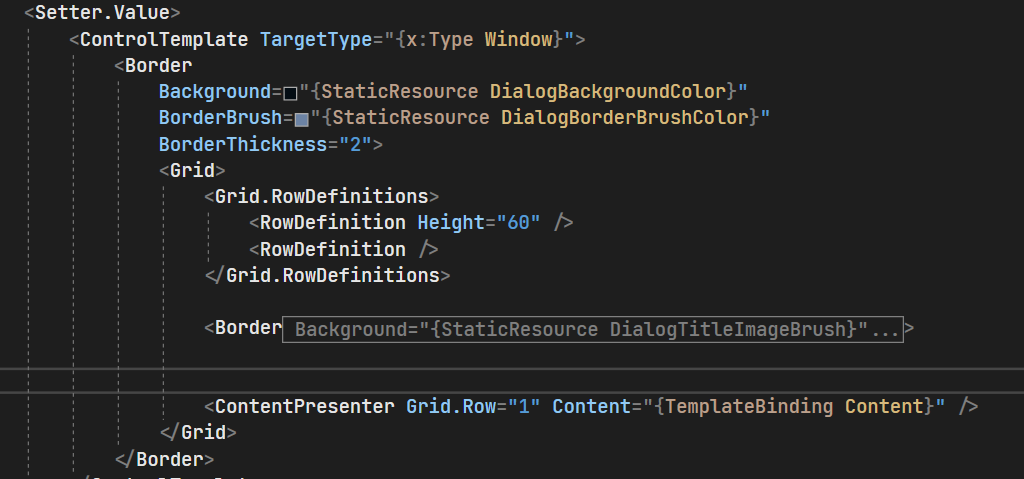
使用組件
1、將自定義的樣式組件註入到IOC容器
protected override void RegisterTypes(IContainerRegistry containerRegistry)
{
containerRegistry.Register<IDialogWindow, DialogWindowView>(nameof(DialogWindowView));
}
2、使用DialogService彈出對話框
private void CustomOpenDialog()
{
DialogParameters dialogParameters = new DialogParameters()
{
{"Title",$"傲慢與偏見 {DateTime.Now:yyyy-MM-dd}" }
};
dialogService.Show(nameof(TestDialogView), dialogParameters, result =>
{
}, nameof(DialogWindowView));
}
這段與傳統打開彈框是差不多,唯一不同的就是使用到了一個可傳入WindowName的重載函數,Tips:我們自定義的這個組件(DialogWindowView)是一定需要註入到IOC容器的,不然拿不到這個實例就會拋出異常,另外還有一個點就是該組件還需繼承自IDialogWindow
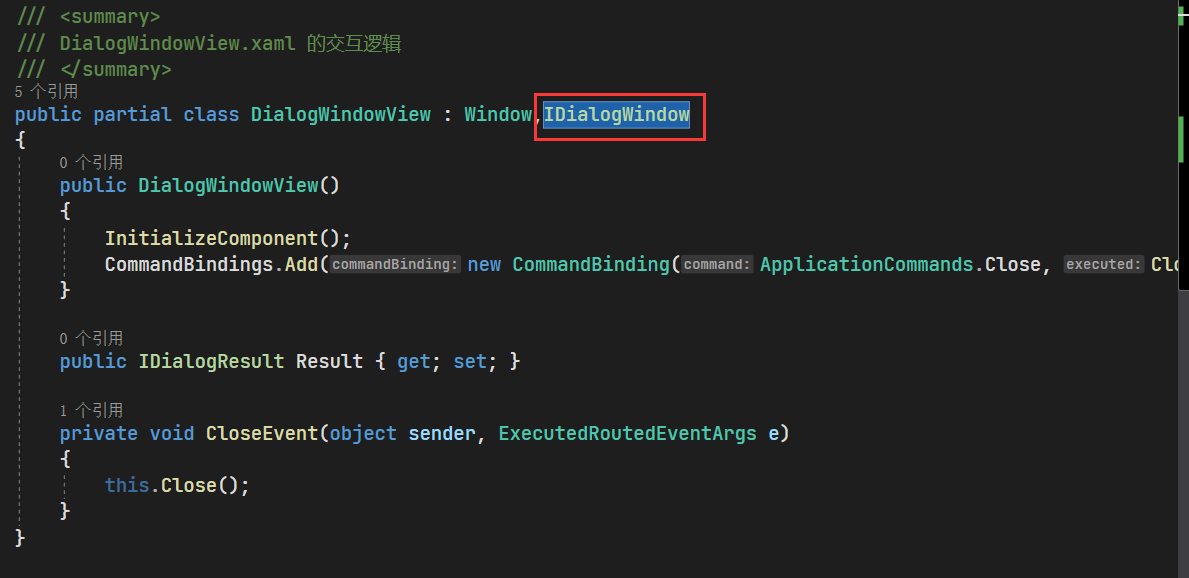
效果
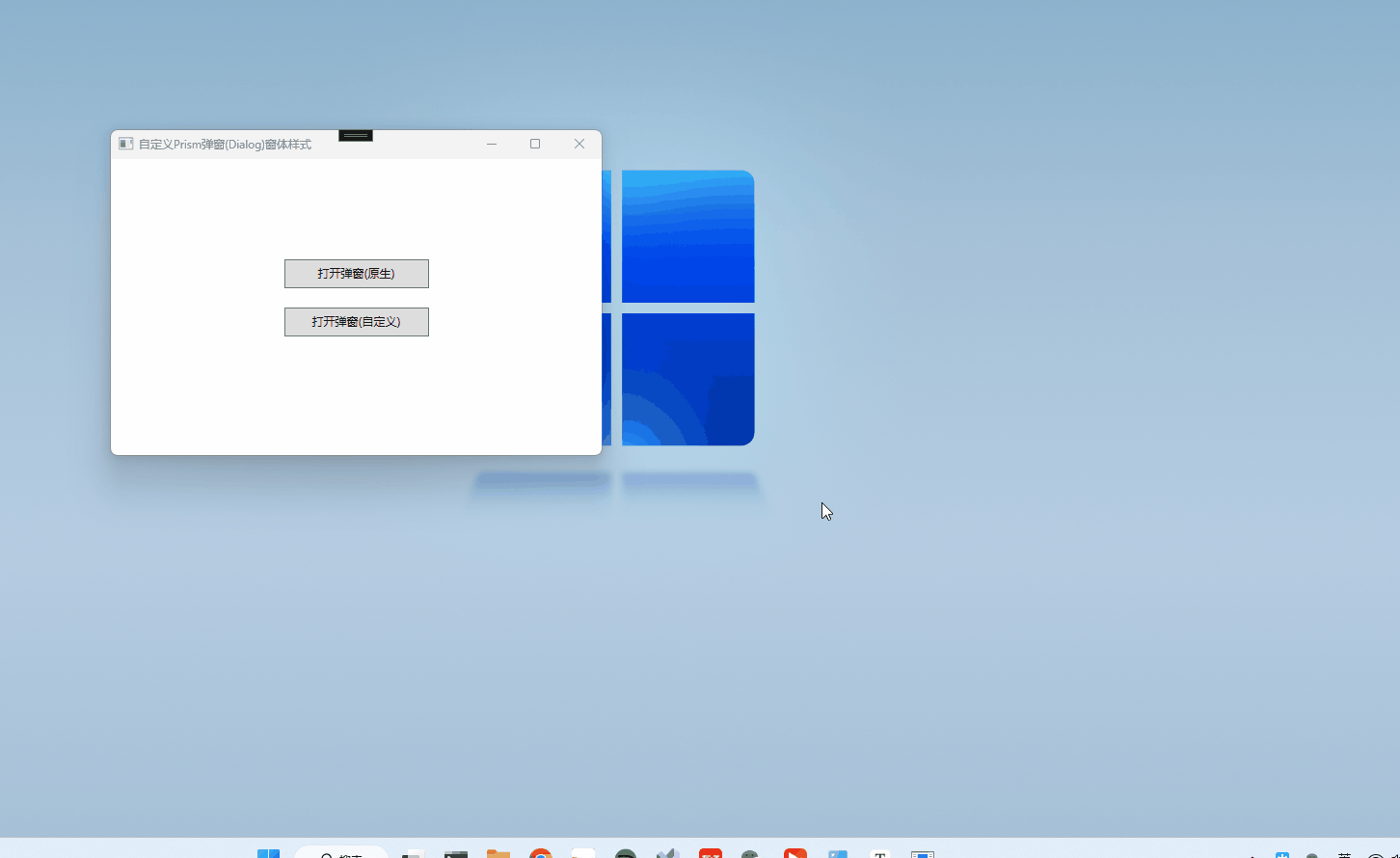
源碼
若Github被牆不方便下載,可留下郵箱發給你



